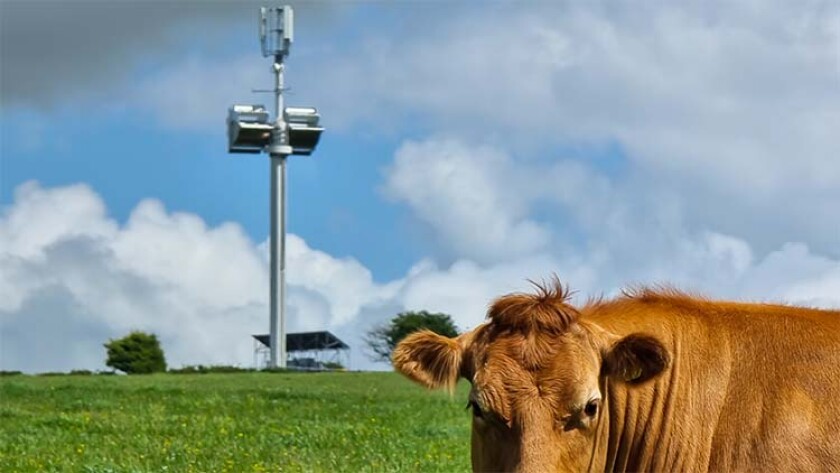The mast (pictured) provides 4G services to the Welsh-speaking village of Eglwyswrw (population 724), 30km north-west of Carmarthen.
Andrea Dona, chief network officer and development director of Vodafone UK, said: “Connectivity is vital to everyone, no matter where you live. This self-powering mobile phone mast, with on-site battery storage, could help us connect places that were previously impossible to reach. It will also help us reduce carbon emissions and minimise our impact on local environments.”
The mast was installed with no need to dig trenches or to lay electricity cables, “making it faster and easier to install and reducing the impact on the local environment”, said Vodafone.
Dona added: “If this trial is a success, we would like to roll out more ‘self-powering’ masts, with a focus on areas with poor or no coverage.”
The trial – due to last two years – uses a quiet wind turbine from Crossflow Energy. The turbine is designed to generate power even in light winds.
However, Vodafone pointed out that it had retrofitted an existing mast – owned by mobile infrastructure company Cornerstone – that is connected to the national electricity grid.
Vodafone said the mast “will be mainly powered by the green energy generated on site but can be ‘topped up’ by electricity from the grid if required”.
Vodafone pointed out that 100% of the grid electricity it uses in the UK is certified to be from renewable sources.
In future, said the company, for remote sites with no national grid connection, another power source will be required as back-up. Vodafone is exploring a range of potential options.
Martin Barnes, CEO of Crossflow Energy, said: “Until now, the use of small wind turbines in the race to net zero has been limited due to issues of performance, reliability, and planning concerns such as noise, vibration, and damage to ecology.”
But the Eglwyswrw mast uses a turbine that “addresses all these challenges head on”, he said. “We believe that one day its use could be as widespread and commonplace as solar panels.”
(Eglwyswrw, pronounced Egg-lis-oo-roo, means “church of St Wrw” or “church of Gwrwyf”, though no one knows who they were.)






